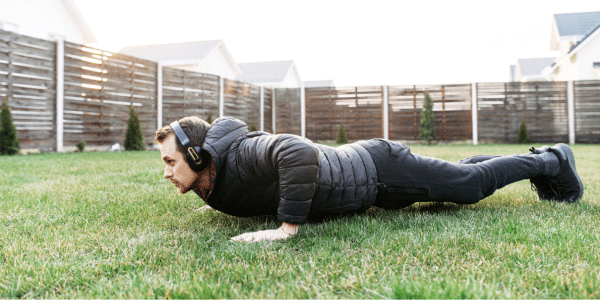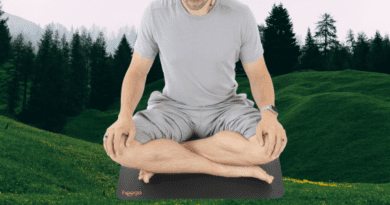Outdoor Gyms: A Complete Guide to Outdoor Gym Equipment
If you’re like most people, you can quickly get sick of going to the same gym every day. Step away from the monotony of indoor fitness routines and into a world where the sun, wind, and fresh air are your workout companions. In this article, we will take you on a journey to discover the wonders of outdoor gym equipment and how an outdoor gym can transform your unused outdoor space into a fitness paradise.
Related Article: Sandbag Workouts — Can Sandbag Training Get You Results?
Disclaimer: It is recommended that you speak with your doctor before engaging in any workout program to ensure you are healthy enough to do so.
Table of contents
- What is Outdoor Gym Equipment?
- Can Any Gym Equipment Be Left Outside in a Backyard Gym?
- What Materials Should Outdoor Home Gym Equipment Be Made From?
- Does Outdoor Home Gym Equipment Rust?
- What Are the Advantages of Outdoor Gym Equipment?
- What Are the Disadvantages of Outdoor Gym Equipment?
- Where Can You Purchase Outdoor Home Gym Equipment?
- What’s the Best Surface for an Outdoor Gym?
- How to Set Up an Outdoor Gym at Your Home for Outdoor Workouts
- What Backyard Gym Equipment Should You Have?
- How Much Does It Cost to Build an Outdoor Gym at Your Home?
- Building Your Outdoor Fitness Paradise
- FAQs
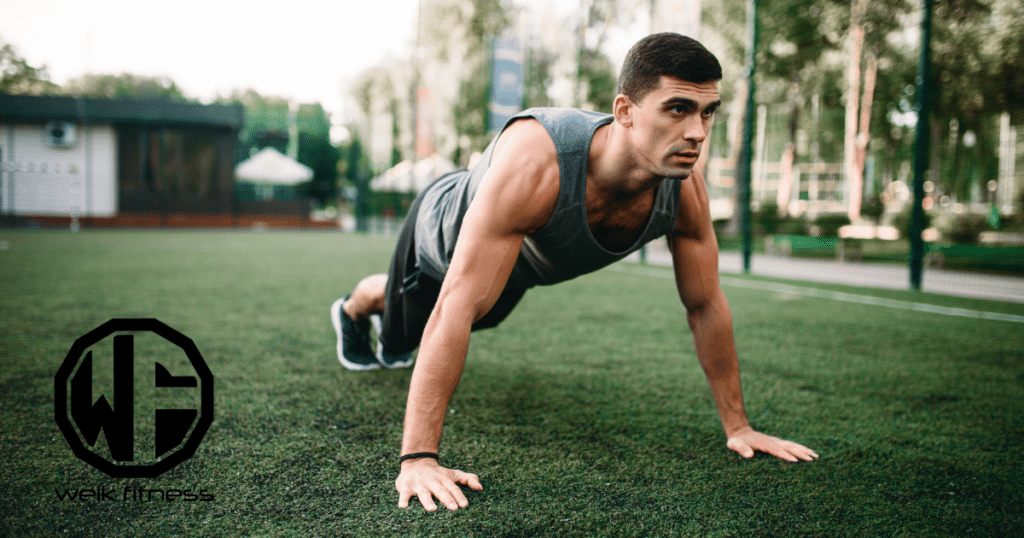
What is Outdoor Gym Equipment?
Outdoor gym equipment, also known as outdoor fitness equipment or outdoor exercise equipment, refers to a set of exercise machines and apparatuses designed for outdoor use in parks, public spaces, or recreational areas. These pieces of equipment are typically made from durable materials such as metal or weather-resistant plastics and are designed to withstand exposure to the elements.
The primary purpose of outdoor gym equipment is to provide a free or low-cost fitness resource for people of all ages and fitness levels. These outdoor fitness stations can be found in various settings, including city parks, community centers, school campuses, and even along jogging trails. They offer a range of cardiovascular, strength training, and flexibility exercises, allowing individuals to engage in a full-body workout in an outdoor setting.
Related Article: The Best Outdoor Workouts to Spice Up Your Training
Outdoor gym equipment is often designed to be user-friendly and safe, with clear instructions and diagrams to guide users through exercises. They promote physical activity, encourage social interaction, and provide an alternative to traditional indoor gym facilities. Additionally, they are accessible to a wider range of individuals, as they are free to use and available in public spaces.
Can Any Gym Equipment Be Left Outside in a Backyard Gym?
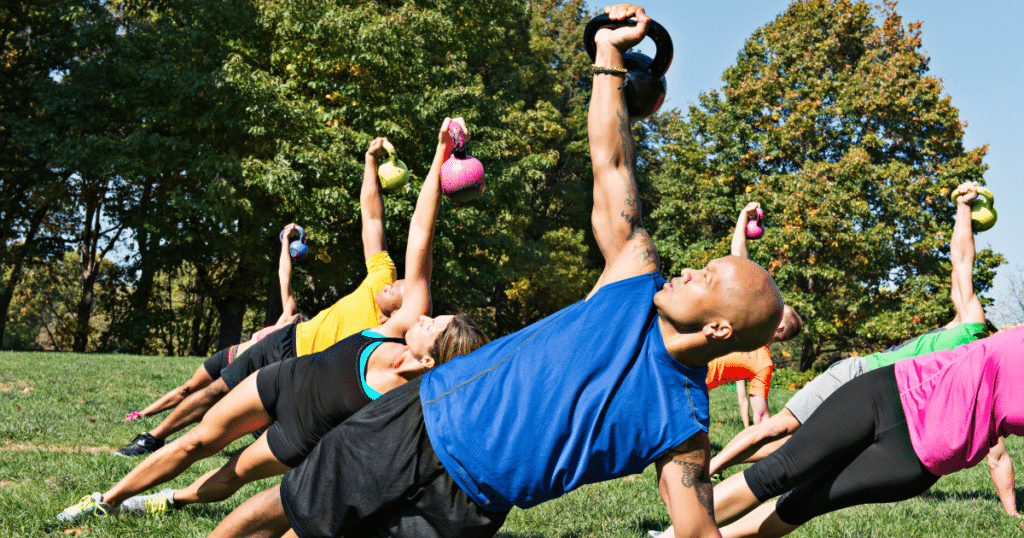
Not all gym equipment can be left outside without suffering damage or experiencing a significant reduction in lifespan. Whether gym equipment can be used outdoors largely depends on its design, materials, and intended use.
Here are some factors to consider:
1. Weather Resistance: Gym equipment intended for outdoor use should be constructed from materials that can withstand exposure to the elements, including rain, sun, wind, and temperature fluctuations. Materials like stainless steel, weather-resistant plastics, and corrosion-resistant coatings are commonly used for outdoor equipment.
2. Durability: Outdoor gym equipment needs to be built to last, as it will be subjected to more wear and tear than equipment kept indoors. It should be sturdy and able to withstand heavy use and potential vandalism.
3. Maintenance: Regular maintenance is essential for outdoor gym equipment. This includes cleaning, lubricating moving parts, inspecting for damage, and making repairs as needed. Neglected equipment can deteriorate quickly when exposed to the elements.
4. Security: To prevent theft and vandalism, outdoor gym equipment should be securely anchored or locked down. Some equipment may have built-in security features.
5. Safety: Outdoor gym equipment should meet safety standards and guidelines. It should be free of sharp edges, have non-slip surfaces, and include clear instructions for use. Regular safety inspections are crucial.
6. Shelter: Whenever possible, providing some form of shelter or protective covering can extend the lifespan of outdoor gym equipment by reducing exposure to harsh weather conditions.
7. Location: The choice of location can also impact the longevity of outdoor gym equipment. Placing it in a high-traffic area or a well-monitored public space can deter vandalism and theft.
8. User Education: Educating users about the proper care and use of outdoor gym equipment can help extend its lifespan. Encouraging responsible use and reporting any damage promptly is essential.
While there are gym equipment options designed specifically for outdoor use, not all gym equipment can be left outside without careful consideration of the factors mentioned above. It’s essential to choose equipment that is suitable for outdoor use (such as specific outdoor gym equipment), maintain it properly, and take precautions to protect it from damage and theft.
What Materials Should Outdoor Home Gym Equipment Be Made From?
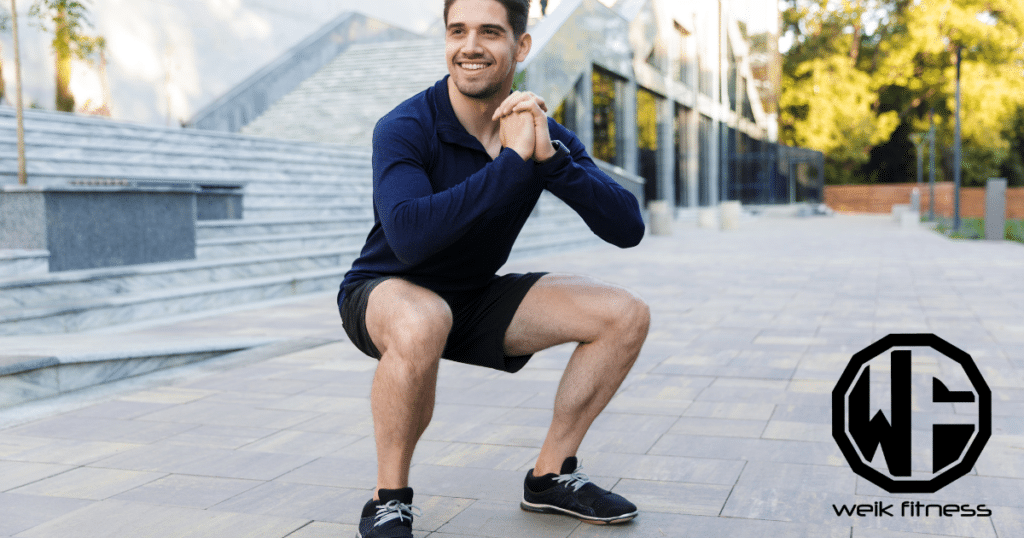
Outdoor gym equipment should be made from durable, weather-resistant materials capable of withstanding exposure to the elements. Here are some common materials used for outdoor gym equipment:
1. Stainless Steel: Stainless steel is a popular choice for outdoor gym equipment because it is highly resistant to corrosion and rust. It can withstand rain, humidity, and saltwater exposure without deteriorating. Stainless steel is also easy to clean and maintain.
2. Galvanized Steel: Galvanized steel is steel that has been coated with a layer of zinc to protect it from corrosion. It is a cost-effective alternative to stainless steel and offers good durability in outdoor settings.
3. Powder-Coated Steel: Steel frames and components may be powder-coated to add an extra layer of protection against the elements. Powder coating helps prevent corrosion and provides a decorative finish in various colors.
4. Aluminum: Aluminum is lightweight and naturally resistant to corrosion, making it a suitable choice for some outdoor gym equipment components. However, it may not be as sturdy as steel for heavy-duty equipment.
5. Weather-Resistant Plastics: Some outdoor gym equipment features plastic components that are engineered to be weather-resistant. These plastics are designed to resist UV damage and maintain their structural integrity in outdoor conditions.
6. High-Density Polyethylene (HDPE): HDPE is a durable plastic commonly used for outdoor fitness equipment. It is resistant to moisture, UV rays, and rot. It’s often used for seats, backrests, and other non-load-bearing parts.
7. Composite Materials: Some manufacturers use composite materials that combine various materials like plastics, fiberglass, and resins to create weather-resistant and durable components for outdoor fitness equipment.
8. Synthetic Rubber: Weather-resistant rubber is often used for grips, handles, and padding on outdoor fitness equipment. It can withstand exposure to moisture and UV rays.
9. Corrosion-Resistant Fasteners: Bolts, nuts, and other fasteners used in outdoor gym equipment should be made of materials like stainless steel or galvanized steel to prevent corrosion and ensure long-lasting stability.
When selecting outdoor gym equipment, it’s important to check the manufacturer’s specifications and materials used to ensure they meet the necessary standards for durability and weather resistance. Proper maintenance and regular inspections are also essential to extend the lifespan of outdoor fitness equipment and ensure user safety.
Does Outdoor Home Gym Equipment Rust?
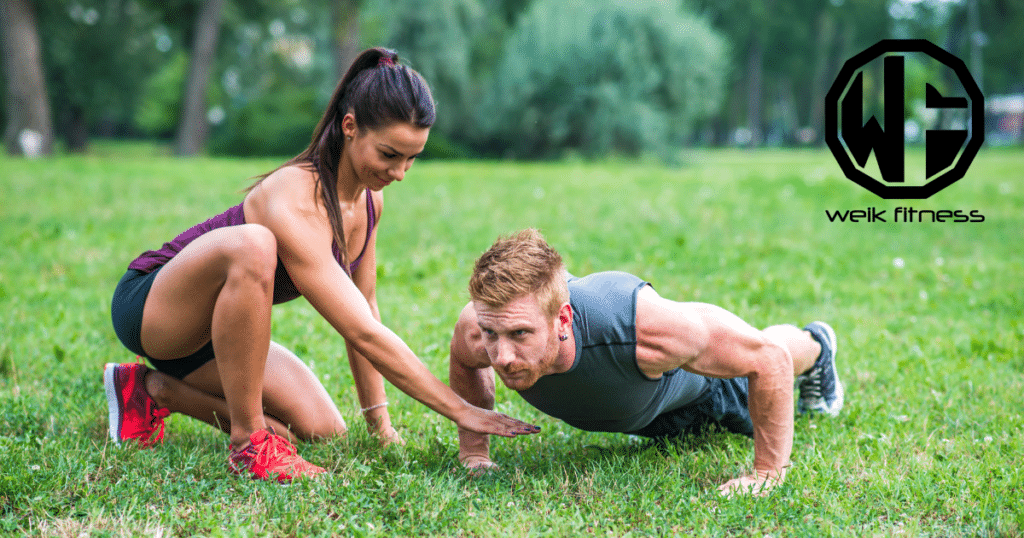
Outdoor gym equipment can rust over time if it is not made from corrosion-resistant materials, properly maintained, or exposed to harsh environmental conditions. Rust is a chemical reaction that occurs when iron or steel comes into contact with oxygen and moisture. Here are some factors that can contribute to rust on outdoor gym equipment:
1. Material Selection: The choice of materials used in the construction of outdoor gym equipment is crucial. Equipment made from materials like stainless steel, galvanized steel, or powder-coated steel is less prone to rust because these materials have built-in corrosion resistance.
2. Environmental Exposure: The extent to which outdoor gym equipment is exposed to environmental factors plays a significant role in rust formation. Equipment in coastal areas, where saltwater and salt-laden air are prevalent, may be more susceptible to corrosion. Likewise, equipment in areas with frequent rain or high humidity may be at greater risk.
3. Maintenance: Proper maintenance is essential to prevent rust on outdoor gym equipment. Regular cleaning, inspection, and lubrication of moving parts can help remove moisture and debris that can contribute to rust formation. Prompt repair of any damaged or rusted components is crucial.
4. Surface Damage: Scratches, dents, or chipped paint on the equipment’s surface can expose the underlying metal to moisture and oxygen, increasing the likelihood of rust. It’s important to address any surface damage promptly.
5. Age: Over time, even well-maintained outdoor gym equipment may develop rust as a natural consequence of exposure to the elements. Regular inspections and refurbishment or replacement of older equipment can help mitigate rust-related issues.
6. Coatings: Some outdoor gym equipment may have protective coatings, such as powder coating or anti-corrosion treatments, to minimize the risk of rust. These coatings should be inspected regularly for signs of wear or damage and repaired as needed.
While outdoor gym equipment can rust under certain conditions, proper material selection, maintenance, and environmental considerations can significantly reduce the risk of rust formation. High-quality materials like stainless steel and proper upkeep are key factors in ensuring the longevity and safety of outdoor fitness equipment.
What Are the Advantages of Outdoor Gym Equipment?
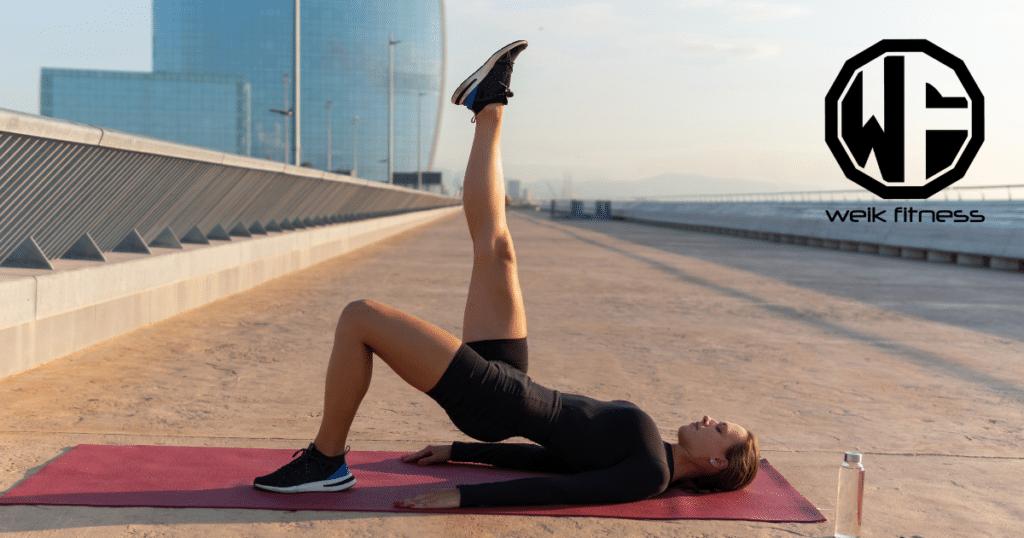
Outdoor gym equipment offers several advantages, making it a popular choice for individuals and communities. Some of the key advantages of outdoor gym equipment include:
1. Fresh Air and Natural Environment: Exercising outdoors allows individuals to enjoy the benefits of fresh air and natural surroundings, which can boost mood and motivation. Being in nature can reduce stress and increase feelings of well-being.
2. Low Maintenance Costs: Many outdoor gym equipment pieces are designed to be durable and low maintenance.
3. Flexibility: Users can exercise at their own pace and on their own schedule. There are no restrictions on operating hours or waiting for equipment to become available, like with commercial gyms.
4. Promotion of Physical Activity: Outdoor gym equipment encourages people to be physically active, which can lead to improved health outcomes, including reduced risk of obesity, heart disease, and other chronic conditions.
5. Environmental Benefits: Outdoor gym equipment often has a smaller carbon footprint compared to indoor gym facilities. It utilizes natural light and ventilation, reducing energy consumption.
6. Adaptive Use: Many outdoor gym pieces are designed to be used by people with mobility challenges, allowing for adaptive exercise programs.
Overall, outdoor gym equipment provides an accessible and enjoyable way for individuals to improve their physical fitness, mental well-being, and overall health while fostering a sense of community and connection with nature.
What Are the Disadvantages of Outdoor Gym Equipment?
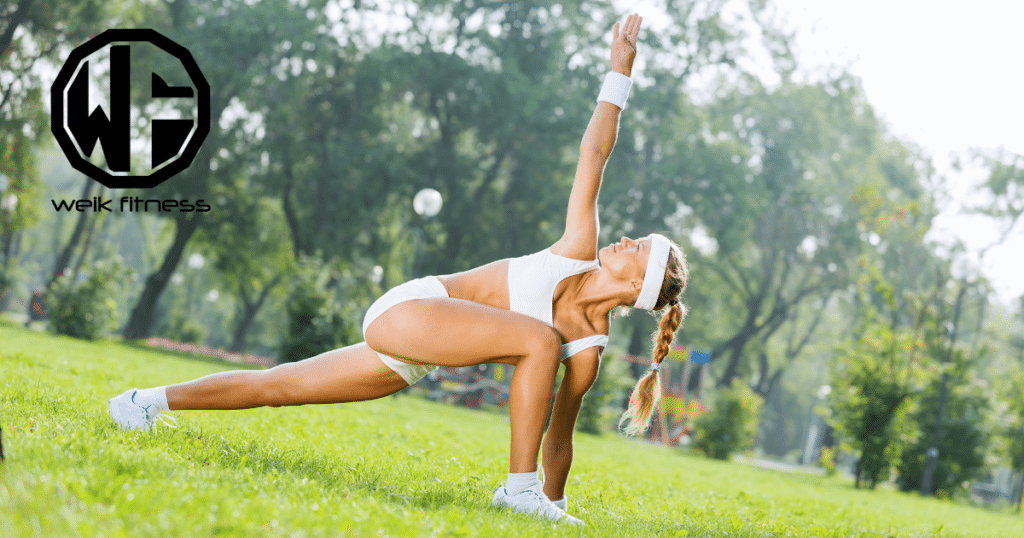
While outdoor gym equipment offers several advantages, it also has some disadvantages and limitations that should be considered:
1. Weather Dependency: Outdoor gym equipment is exposed to the elements, which means that it may not be usable during extreme weather conditions such as heavy rain, snow, or extreme heat. This can limit its availability for exercise.
2. Limited Equipment Variety: Building an outdoor gym may not offer the same variety of equipment and exercise options as indoor gyms. Specialized or advanced exercise equipment may be lacking in outdoor settings.
3. Maintenance Challenges: Maintaining outdoor gym equipment can be challenging, as it requires regular cleaning, inspection, and repairs to prevent wear, rust, and vandalism. Neglected equipment may become unsafe or non-functional.
4. Safety Concerns: While outdoor fitness equipment is designed with safety in mind, there is a risk of injury if users do not use the equipment correctly or if it is damaged.
5. Lack of Privacy: Outdoor gym equipment is often in the owner’s yard, which may lack the privacy that some individuals prefer when exercising. This can be a deterrent for those who prefer a more private workout environment.
6. Limited Hours of Use: Outdoor gym equipment may not be well-lit or accessible during evening hours, limiting its use to daytime or well-lit areas.
7. Vandalism and Theft: Outdoor gym equipment is susceptible to vandalism and theft, which can result in damage or loss of the outdoor gym equipment.
8. Equipment Wear and Tear: Outdoor gym equipment may experience more wear and tear than indoor equipment due to exposure to the elements and heavy use. This may require more frequent maintenance and replacement.
9. Space Limitations: Outdoor gym equipment may have space limitations, and not all yards and properties have the room to accommodate a full range of outdoor gym equipment.
10. Hygiene Concerns: Equipment that is outdoors may be exposed to dirt, pollen, and other allergens, which can be a concern for individuals with allergies or sensitivities.
Outdoor gym equipment has several disadvantages, including exposure to weather, limited equipment variety, maintenance challenges, and potential safety concerns. However, many of these disadvantages can be mitigated with proper planning, maintenance, and oversight to ensure that users have a safe and enjoyable exercise experience.
Where Can You Purchase Outdoor Home Gym Equipment?
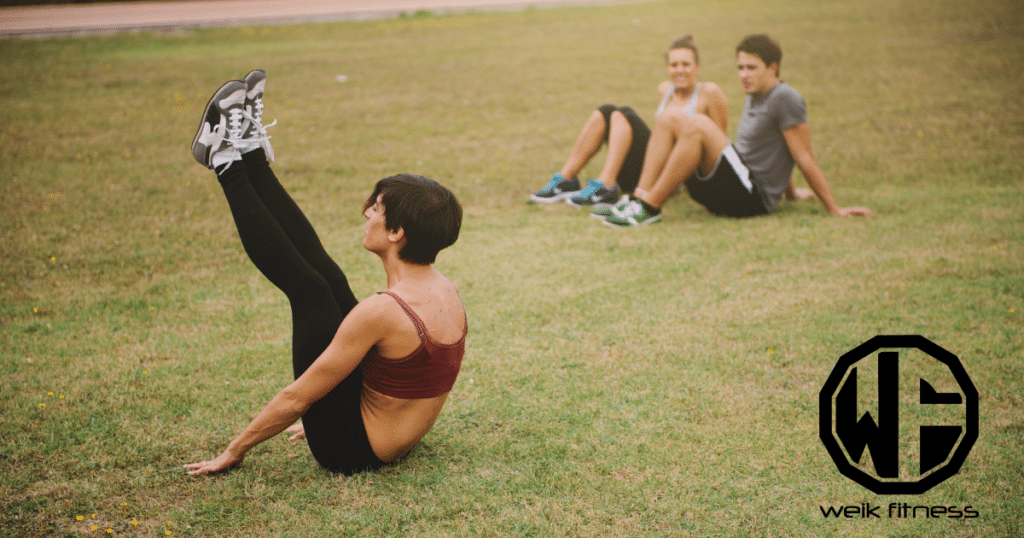
You can purchase outdoor gym equipment from various sources, including manufacturers, suppliers, distributors, and retailers specializing in fitness and recreational equipment.
Here are some options to consider:
1. Fitness Equipment Manufacturers: Many fitness equipment manufacturers produce outdoor fitness equipment as part of their product offerings. You can contact these manufacturers directly to inquire about their outdoor gym equipment options. Some well-known fitness equipment manufacturers include Life Fitness, Precor, and Technogym.
2. Specialized Outdoor Fitness Equipment Suppliers: Several companies specialize in outdoor gym equipment and provide a wide range of options suitable for outdoor use. These suppliers often have experience in designing equipment specifically for outdoor environments.
3. Online Retailers: Online marketplaces and retailers like Amazon, eBay, and Walmart may offer outdoor fitness equipment from various brands and manufacturers. Be sure to read product reviews and check the specifications to ensure the equipment meets your needs and quality standards.
4. Local Fitness Equipment Stores: Some local fitness equipment stores may carry outdoor fitness equipment or be able to order it for you. Visiting these stores allows you to see the equipment in person and ask questions to knowledgeable staff.
5. Recreation and Park Equipment Suppliers: Companies that specialize in playground equipment, park amenities, and recreational facilities may also offer outdoor fitness equipment suitable for public parks and recreational areas.
When purchasing outdoor gym equipment, consider factors such as the quality and durability of the equipment, warranty and maintenance options, installation requirements, and any necessary safety certifications. It’s also essential to assess the specific needs and preferences of the users and the available space to ensure that the equipment selected meets the requirements of the intended location.
What’s the Best Surface for an Outdoor Gym?
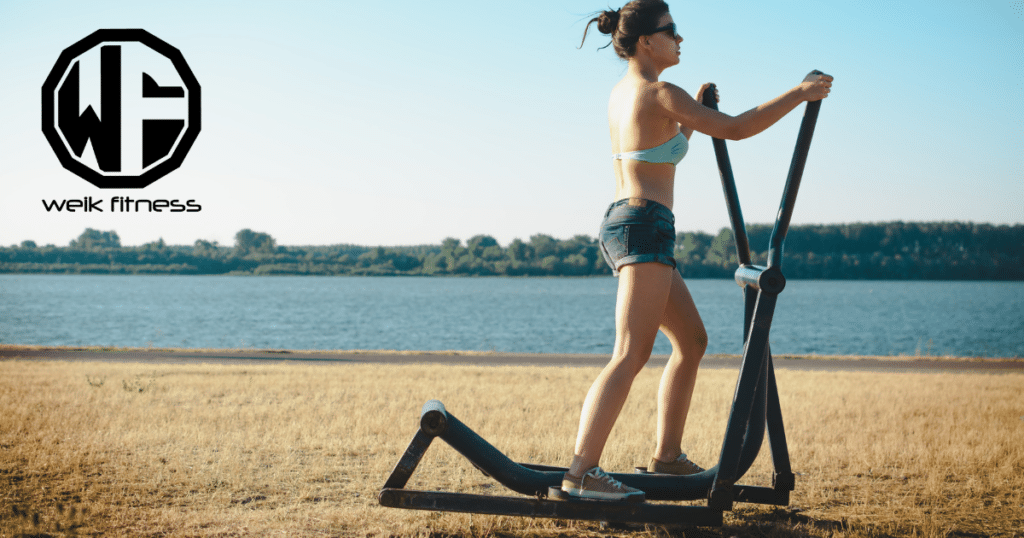
Selecting the best surface for an outdoor gym depends on various factors, including budget, the type of exercise equipment, location, and local climate. Here are several options to consider:
1. Grass or Turf:
- Advantages: Grass or natural turf provides a comfortable and aesthetically pleasing surface. It’s suitable for bodyweight exercises, yoga, and stretching.
- Considerations: Grass may become uneven over time, and maintenance is required to keep it in good condition. Heavy equipment can damage natural turf.
2. Rubber Tiles or Mats:
- Advantages: Rubber tiles or mats provide shock absorption, making them suitable for cardio and strength training. They are durable, slip-resistant, and easy to clean.
- Considerations: Initial installation costs can be high, but they require minimal maintenance. Proper drainage is essential to prevent water accumulation.
3. Concrete or Asphalt:
- Advantages: Concrete and asphalt are firm surfaces suitable for outdoor gym equipment. They are long-lasting and can handle heavy equipment.
- Considerations: They may not be as comfortable for bodyweight exercises or impact activities. These surfaces can get hot in direct sunlight and may require additional padding.

4. Poured-in-Place Rubber Surfacing:
- Advantages: This is a seamless rubber surface that provides excellent shock absorption, making it ideal for cardio and strength training. It’s durable and safe.
- Considerations: Installation can be costly, and proper drainage is crucial. It’s a long-term investment.
5. Wooden Decking:
- Advantages: Wooden decking can provide a natural and visually appealing surface for outdoor gyms. It’s suitable for yoga, stretching, and lightweight equipment.
- Considerations: It requires regular maintenance, such as sealing and refinishing. Wooden surfaces can become slippery when wet.
6. Recycled Rubber Mulch:
- Advantages: Made from recycled tires, rubber mulch is an eco-friendly option that offers impact protection. It’s suitable for areas with a mix of exercise and play equipment.
- Considerations: It may need replenishing over time, and drainage is essential. It may not be the best choice for high-impact exercises.
7. Pavers or Interlocking Tiles:
- Advantages: Interlocking tiles or pavers provide a stable and level surface for outdoor gyms. They are easy to install and replace.
- Considerations: The seams between tiles can become trip hazards if not properly maintained. Ensure good drainage underneath.
8. Gravel or Crushed Stone:
- Advantages: Gravel or crushed stone is a low-cost option that provides good drainage. It can be used for bodyweight exercises and some strength training.
- Considerations: Uneven surfaces can be challenging for some exercises. Regular maintenance is required to prevent weeds and maintain stability.
When choosing the best surface for your outdoor gym, consider the types of exercises and equipment you plan to use, user safety, accessibility, budget, and local climate conditions. Consulting with a professional landscape architect or contractor with experience in outdoor fitness installations can help you make an informed decision and ensure that the chosen surface meets your specific needs and requirements.
How to Set Up an Outdoor Gym at Your Home for Outdoor Workouts
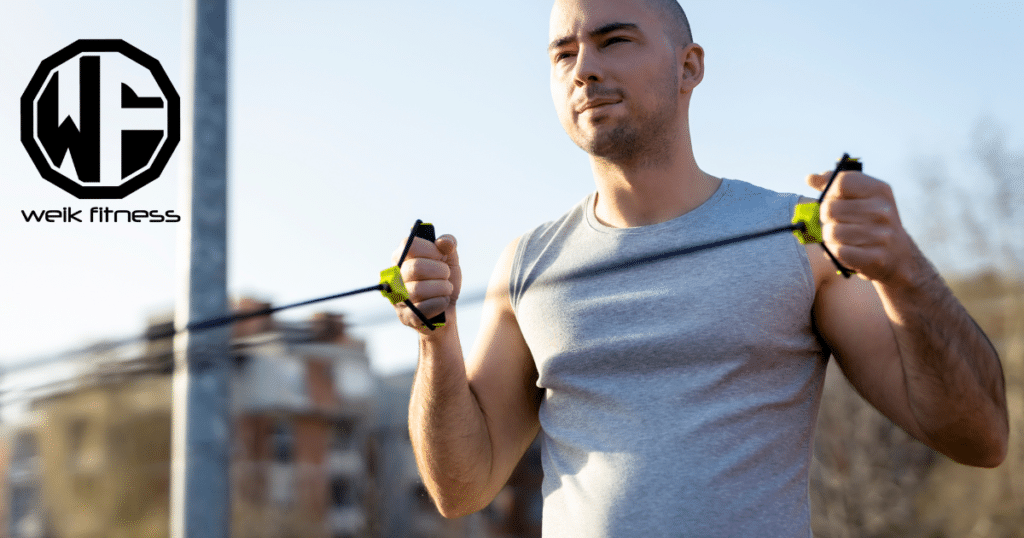
Setting up an outdoor gym at your home can be a rewarding and convenient way to stay fit and enjoy the benefits of outdoor exercise. Here’s a step-by-step guide to help you create your own outdoor workout space:
1. Plan Your Space:
- Evaluate your available outdoor space. Consider factors like size, terrain, and privacy.
- Choose a location that receives adequate sunlight, provides good drainage, and is easily accessible from your home.
2. Set a Budget:
- Determine how much you’re willing to invest in your outdoor gym. This will help you prioritize equipment and materials.
3. Select Your Equipment:
- Choose the types of equipment you want based on your fitness goals and budget. Some common options include:
- Bodyweight Exercise Stations: Pull-up bars, dip bars, and parallel bars.
- Cardio Equipment: Outdoor exercise bikes or elliptical machines.
- Strength Training Equipment: Dumbbells, resistance bands, or kettlebells.
- Functional Training Equipment: Medicine balls, stability balls, or agility cones.
- Yoga and Stretching Accessories: Yoga mats, foam rollers, and yoga blocks.
- Ensure that the equipment you select is designed for outdoor use and made from weather-resistant materials.
4. Plan the Layout:
- Arrange your equipment in a way that maximizes space and provides a safe workout environment.
- Ensure there is enough clearance around each piece of equipment to perform exercises safely.
5. Prepare the Ground:
- Depending on your chosen surface (e.g., grass, rubber tiles, gravel), prepare the ground as needed. This may involve leveling, adding drainage, or installing a suitable surface.
6. Install the Equipment:
- Assemble and install your selected equipment according to the manufacturer’s instructions.
- Ensure that everything is securely anchored and stable.
7. Create a Workout Area:
- Set up an area for stretching and warm-up exercises, preferably with a soft surface like rubber tiles or a yoga mat.
- Consider installing a shade structure or outdoor umbrella for protection from the sun.
8. Safety Considerations:
- Install proper lighting if you plan to work out during early mornings or evenings.
- Ensure there are no tripping hazards or obstacles around the workout area.
- If you have children or pets, create a safe barrier to keep them away from your equipment when not in use.
9. Personalize Your Outdoor Gym:
- Add motivational elements such as posters, inspirational quotes, or a small speaker system for music.
10. Maintenance:
- Regularly inspect your outdoor gym equipment for wear and tear.
- Clean and maintain the equipment as recommended by the manufacturer.
- Address any issues promptly to ensure safety.
11. Stay Consistent:
- Make a workout schedule and commit to regular exercise in your outdoor gym to maximize its benefits.
12. Enjoy Your Space:
- Take advantage of your outdoor gym to stay fit, enjoy fresh air, and connect with nature while working out.
Remember that setting up an outdoor gym is a personal project, and you can tailor it to your fitness preferences and goals. It’s also a great way to make the most of your outdoor space and encourage a healthier lifestyle.
What Backyard Gym Equipment Should You Have?
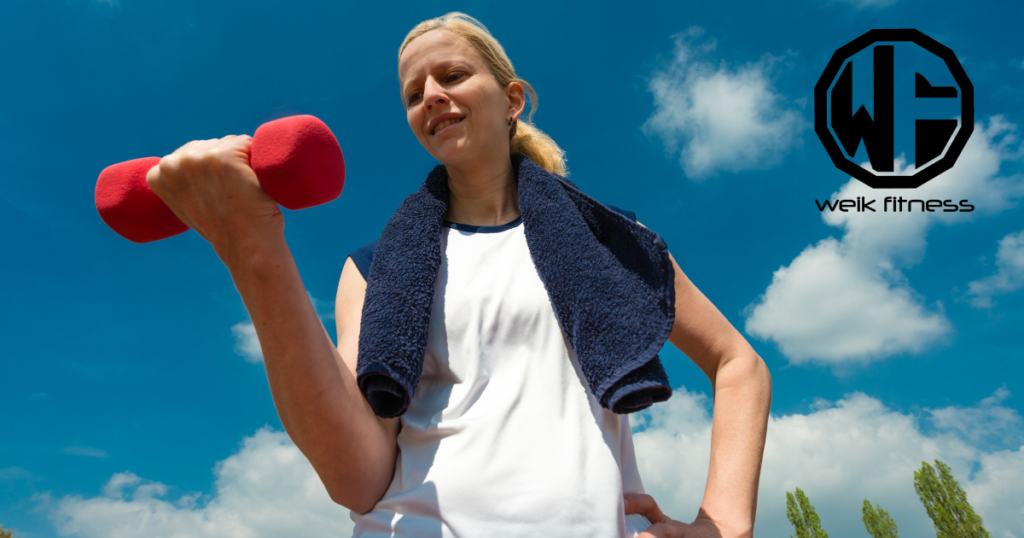
If you want to build an outdoor home gym or backyard gym, there are some fantastic pieces of outdoor gym equipment you can consider purchasing. Some of the key basic pieces of outdoor workout equipment are listed below (note, special care is still needed to help protect and preserve the outdoor gym equipment listed below):
- Outdoor Multi-Use Power Tower
- Bumper Plates
- Battle Rope Outdoor Anchor Strap
- Weight Bench
- Adjustable Dumbbells
- Agility Ladder
- Jump Rope
How Much Does It Cost to Build an Outdoor Gym at Your Home?
The cost of building an outdoor gym at your home can vary widely based on several factors, including the type and quantity of equipment you choose, the quality of materials, site preparation requirements, and any additional features you want to include. Here are some cost considerations to help you estimate the expenses:
1. Equipment Cost: The largest portion of your budget will likely go toward purchasing fitness equipment. The cost varies greatly depending on the types and brands of equipment you choose. Basic outdoor gym equipment like pull-up bars and dip bars can cost a few hundred dollars, while more elaborate cardio machines or multi-station setups can range from a few thousand to several thousand dollars per piece.
2. Site Preparation: Preparing the area where you plan to install the gym may require some work. This can include grading, leveling, adding a suitable surface (e.g., rubber tiles, gravel), and ensuring proper drainage. Site preparation costs can vary significantly based on the condition of your existing outdoor space and any required landscaping work.
3. Installation and Assembly: If your chosen equipment requires professional installation or assembly, you’ll need to factor in labor costs. Some equipment may be easy to install on your own, while others may require hiring professionals.
4. Safety and Flooring: Safety considerations, such as adding safety flooring or mats, can contribute to your costs. Rubber tiles or mats can provide a comfortable and safe workout surface but come with a price.
5. Accessories and Amenities: Depending on your preferences, you may want to include accessories like mirrors, lighting, shade structures, or seating areas. These can add to the overall cost.
6. Maintenance and Repairs: Budget for ongoing maintenance costs, such as cleaning, lubricating moving parts, and repairing or replacing damaged equipment.
7. Permits and Regulations: Check with your local government or homeowner’s association regarding any permits or regulations that may apply to outdoor gym installations. Obtaining permits, if necessary, can add to your costs.
8. Landscaping: Consider landscaping and plantings around your outdoor gym area to create an aesthetically pleasing and functional space. Landscaping costs will depend on the scope of the project.
9. Miscellaneous Costs: Miscellaneous expenses can include tools, safety signage, and fitness accessories (e.g., workout gloves and resistance bands).
To provide a rough estimate, a basic outdoor gym with a few essential pieces of equipment might cost between $1,000 and $5,000. However, the cost could range from $10,000 to $20,000 or more for a more comprehensive setup with high-end equipment and additional features.
Related Article: Get a Breath of Fresh Air with This Outdoor Metabolic Circuit
That being said, you could also go more basic with only a few key pieces of equipment that will keep your costs well under $1,000.
It’s vital to plan your budget carefully, prioritize your fitness goals and equipment needs, and seek quotes from equipment suppliers and contractors to get a more accurate estimate based on your specific requirements and location. Remember that while there may be an initial investment, an outdoor gym can offer long-term fitness benefits and enhance the value of your property.
Building Your Outdoor Fitness Paradise
As we wrap up our exploration of the world of outdoor fitness backyard gym ideas, one thing becomes abundantly clear about outdoor training: planning an outdoor gym is more than just a collection of equipment—it’s a gateway to a healthier, more invigorating way of life. With the sun on your skin, the breeze in your hair, and the world as your backdrop, outdoor gym equipment transforms mere workouts into captivating adventures.
Related Article: Backyard Monkey Bars for Home Workouts: The Ultimate Guide
Creating your own outdoor gym design is a journey worth embarking upon, offering benefits that extend far beyond physical fitness. It’s an investment in well-being, an invitation to connect with nature, and an opportunity to break free from the monotony of indoor routines. Your outdoor space becomes a sanctuary, a personal haven for self-improvement and renewal.
So, whether you’re a fitness enthusiast yearning for the great outdoors or someone taking their first step into the world of outdoor fitness, remember this: your outdoor gym is more than a place—it’s an experience. It’s where you sculpt your body, clear your mind, and embrace the vitality of life. As you embark on this exciting journey, may your outdoor gym equipment be your trusted companion, guiding you toward a healthier, happier, and more vibrant you. Welcome to the world of the outdoor gym, where every workout is an exhilarating adventure, and the sky is the only limit.
FAQs
An outdoor gym is a fitness area located outside, typically in public parks or personal backyard spaces, that provides various exercise equipment and facilities for individuals to engage in outdoor workouts and fitness activities.
To build your own outdoor gym at home, follow these steps:
1. Determine the available space in your backyard
2. Plan the layout and design of your outdoor gym
3. Select suitable outdoor gym equipment for your fitness goals and space
4. Ensure the area is safe, level, and well-drained
5. Install the outdoor gym equipment securely according to the manufacturer’s instructions
6. Consider adding additional amenities such as rubber flooring, shade structures, or storage space
7. Regularly maintain and clean your outdoor gym equipment for longevity
Outdoor gym equipment can vary depending on your fitness preferences and goals. Some popular options include:
– Pull-up bars and monkey bars
– Parallel bars and dip bars
– Outdoor weight benches
– Outdoor exercise machines
– Resistance bands and suspension trainers
– Outdoor cardio equipment such as ellipticals or stationary bikes
– Outdoor yoga and stretching areas
– Calisthenics stations
– Climbing walls or ropes
– Outdoor agility equipment
Choosing the right outdoor gym equipment involves considering several factors:
– Fitness goals and preferences
– Available space and budget
– Durability and weather-resistance of the equipment
– Safety features and certifications
– Maintenance requirements
– User capacity and accessibility considerations
– Compatibility with other equipment or accessories
It is recommended to research and consult with fitness professionals or outdoor gym specialists to guide you in making the best equipment choices.
Yes, safety is crucial when building an outdoor gym. Consider the following precautions:
– Ensure proper installation of equipment according to manufacturer guidelines
– Regularly inspect and maintain the outdoor gym equipment


*Disclosure: This article may contain affiliate links or ads, which means we earn a small commission at no extra cost to you if you make a purchase through these links. These commissions help support the operation and maintenance of our website, allowing us to continue producing free valuable content. Your support is genuinely appreciated, whether you choose to use our links or not. Thank you for being a part of our community and enjoying our content.
PLEASE CONSIDER SHARING THIS ON YOUR SOCIAL MEDIA TO HELP OTHERS LEARN MORE ABOUT THIS TOPIC.


